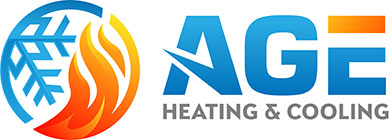
You might not think much about how your air conditioner works, but it needs refrigerant to keep your house cool. This refrigerant is bound by environmental laws, since it contains chemicals.
Based on when your air conditioner was added to your home, it may need R-22, R-410A or R-32 refrigerant. We’ll go over the differences and which air conditioner refrigerants are being phased out in Sandpoint, in addition to how these phaseouts affect you.
What’s R-22 and Why Is It Discontinued?
If your air conditioner was added before 2010, it possibly uses Freon®. You can learn if your air conditioner uses it by contacting us at 208-603-2210. You can also inspect the name plate on your air conditioner condenser, which is situated outside your house. This sticker will contain info on what model of refrigerant your AC needs.
Freon, which is also referred to as R-22, contains chlorine. Scientists consider Freon to be harmful to the earth’s ozone layer and one that leads to global warming. The Environmental Protection Agency, which governs refrigerants in the United States, banned its manufacture and import in January 2020.
Should I Replace My R-22 Air Conditioner?
It varies. If your air conditioning is cooling fine, you can continue to keep it. With regular air conditioner maintenance, you can expect your system to operate around 15–20 years. However, the Department of Energy notes that removing a 10-year-old air conditioner could save you 20–40% on annual cooling expenses!
If you don’t get a new air conditioner, it may cause an issue if you require air conditioning repair in the future, specifically for refrigerant. Repairs might be higher-priced, as only small amounts of recycled and reclaimed R-22 is accessible.
With the phaseout of R-22, a lot of new air conditioners now use Puron®. Also referred to as R-410A, this refrigerant was created to keep the ozone layer in good shape. As it calls for an incompatible pressure level, it isn’t compatible with air conditioners that need R-22 for cooling.
However, Puron still has the likelihood to create global warming. Because of that, it could also sometime be ended. Although it hasn’t been communicated yet for residential air conditioners, it’s anticipated sometime this decade.
What Refrigerant Will Take the Place of R-410A?
In preparation of the end, some brands have started using R-32 in new air conditioners. This refrigerant is classified low for global warming potential—about one-third less than R-410A. And it also reduces energy use by approximately 10%, according to the Intergovernmental Panel on Climate Change’s Fourth Assessment Report. That’s savings that might be passed on to you through your energy costs.
Age Heating & Cooling Can Help with All Your Air Conditioning Needs
In brief, the changes to air conditioner refrigerant probably won’t affect you greatly until you have to have repairs. But as we went over previously, repairs connected to refrigerant might be more costly since there are the low quantities on hand.
Not to mention, your air conditioner often breaks down at the worst time, often on the muggiest day when we’re experiencing lots of other appointments for AC repair.
If your air conditioner uses an outdated refrigerant or is aging, we recommend getting a new, energy-efficient air conditioner. This provides a stress-free summer and might even decrease your utility expenses, especially if you get an ENERGY STAR®-rated air conditioner. Plus, Age Heating & Cooling provides many financing solutions to make your new air conditioner fit your budget. Contact us at 208-603-2210 to start now with a free estimate.







